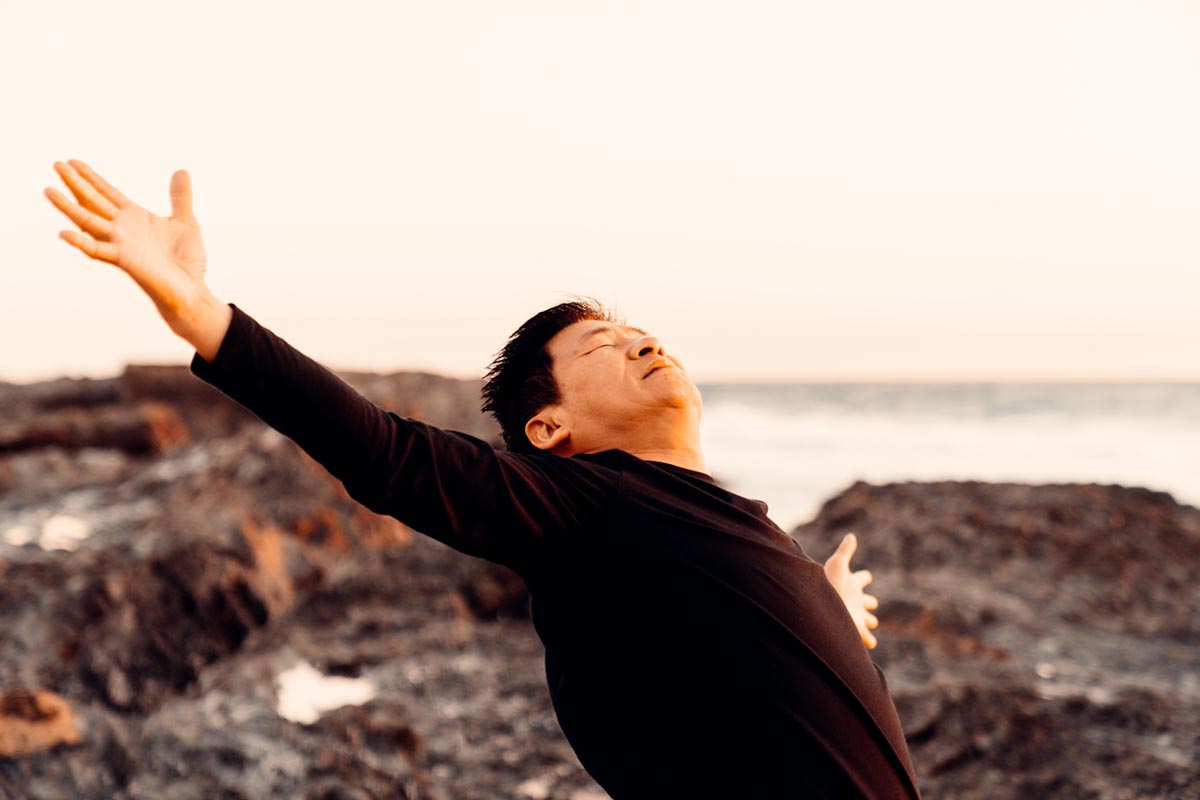The modern Chinese word for calligraphy, 书法 (shūfǎ), literally means “way/method/law of writing.”
The traditional character 書 (shū) includes the component 聿, a pictograph of a hand holding a writing brush. From its origin, it referred to the act of inscribing meaning through movement rather than a static object.
The character 法 (fǎ) means principle, method, or law. Etymologically, it expresses the idea of “that which flows in accord with the natural order.” In philosophical usage, fǎ refers not only to human rules but also to alignment with the natural law that governs the universe. The same fǎ appears in the Daoist phrase 道法自然 (dào fǎ zì rán) – “the Dao follows what is natural.”
In Japan, the traditional art of calligraphy is called 書道 (shodō), “the Way of writing.” The term derives directly from the earlier Chinese expression 书道 (shūdào), which carried the same sense of Dao (道) as a path of moral and spiritual cultivation. While in China the term 书法 eventually became dominant, Japan preserved the older form 書道, maintaining the emphasis on writing as a spiritual Way rather than a formal technique.
Following the Way
The word 书法 (shūfǎ) is far more than a technical term. In Chinese thought, writing was never viewed as a purely manual craft, but as an expression of the same living energy that animates all of nature – the embodiment of Dao through brush and movement. Philosophers and artists alike described the brushstroke as the visible trace of qi (气) – the vital energy that gives life to all things. When the calligrapher’s body, breath, and mind move in harmony, qi flows unobstructed through the brush, revealing one’s inner state in each line and curve. In this sense, true calligraphy is not about decoration but about allowing qi to move freely – movement arising naturally from inner harmony and connection.
Daoist philosophy grew from direct observation of nature. Texts such as the Dao De Jing describe how water embodies the Dao: it yields yet overcomes, flows downward without striving, and finds its own effortless path.
As Master Zhen Hua Yang teaches, the real essence of calligraphy is balance. Just as water after heavy rain finds its way down a mountain, adjusting and flowing effortlessly around rocks and roots, so too the brush follows the easiest, most natural path. The art of calligraphy mirrors this principle, emphasizing fluid, seamless, and unforced movement – a visible reflection of nature’s own path.

The Internal River
During his youth, while wandering through Jiuzhaigou Park in China and observing water in all its forms – waterfalls, lakes, rivers, and cascades – Master Yang came to a profound realisation about the meaning of water flow and how it relates to the human body and health. In his teaching, the “water” of calligraphy becomes the movement of blood circulation within us – a living, pulsating river that nourishes our existence in human form and keeps every cell alive. Calligraphy Health translates this principle into motion: to move as water moves – fluid, continuous, instinctive, without strain or resistance. It carries forward the traditional meaning of calligraphy as expressing intention through movement, yet here the movement is traced not with the brush but with the entire body.
The body’s outer flow is guided from within by the cascading movement of blood, rather than pushed from without by muscular effort or force. The practice is not about doing, but about allowing movement to take its natural form – just as water flows down a mountain after rain. Water does not need to work to flow. It does not try, think, or force its way forward. It simply follows its nature, and the path opens. The same principle applies within the body: when movement arises from internal connection rather than from doing, it does not consume energy – it generates it.
With time and practice, that inner stream grows stronger. Our energy expands, and our movement becomes freer and more effortless, yet at the same time more grounded and powerful. All elements – body, breath, mind, and organs – develop in harmony, following their natural rhythm.
Calligraphy Health
Master Yang often compares this living movement to a fish gliding through water or an octopus moving with quiet awareness – effortless, instinctive, and joyful. It is movement that arises not from thought, not from the surface, but from the body’s core, carrying a sense of freedom and spaciousness. In brush calligraphy, the brush becomes an extension of the writer’s arm and, ultimately, of the whole body. The marks on paper reveal more than physical motion – they reveal the writer’s inner state: character, life force, and presence. The same principle applies in Calligraphy Health. What is seen on the outside is a pure and unfiltered reflection of the inner landscape. Each movement becomes a visible painting of one’s inner world – the body translating its true nature into form. The art of inner harmony.
The process of finding that harmonious flow within brings all internal systems back into balance – circulation, the nervous system, and digestion. The organs return to harmony, and the body’s inner channels reopen. That is Calligraphy Health in its simplest form.




